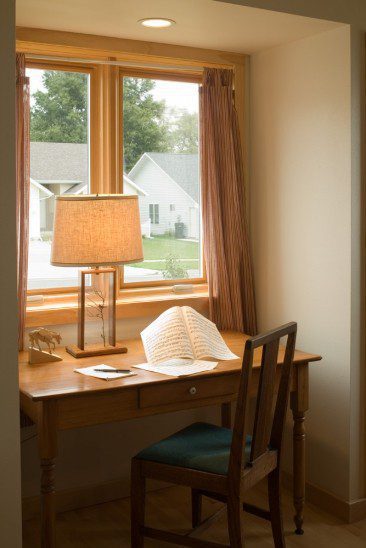
Integrated Design is an important innovation in contemporary architectural design practices. Understanding that a building works as a whole, interdependent system, integrated design actively involves the major players (designer, engineer, builder, client, mechanical contractors, materials suppliers, etc) in the design process from the beginning. In this multidisciplinary collaboration, the architectural design, materials, and systems are chosen and sized to work efficiently and effectively together.
An integrated approach can result in significant cost savings, both initially and over the life of the home. For example, a common and valuable consequence of integrated design in passive solar, super-insulated homes is shrinking or even eliminating unnecessary mechanical equipment; an idea called “right-sizing." When a structure uses high performance insulation and windows, a large, complicated heating/cooling system is unnecessary, and early collaboration can result in a mechanical system that better fits the needs of the building.
Instead of the designer designing the home then passing the plans on to the engineer who passes them on to the contractor, an early, multidisciplinary collaboration often results in better design with better materials and systems decisions. This can have a significant impact in the comfort, cost, and operation of the building.
Once you have come on board and the design process has begun, we will suggest that you start to look for a local builder who is receptive to progressive building materials and methods so they can join our team and offer their ideas and perspectives as the design progresses. We often ask builders to do a cost take-off on the preliminary plans so we can get a preliminary cost estimate before the design has been finalized. This allows us to modify the plan to better fit the budget if necessary. Building costs vary widely from area to area and the best person to give an accurate, local estimate is a trusted local builder. We also involve subcontractors to design mechanical systems that work best for our type of home and for the local climate. An engineer reviews the plans early on as well. The result is a project with a team who is familiar with the plans before construction begins. This leads to a smoother building process and a finished home that works elegantly and efficiently.
Another benefit of involving potential builders and their subcontractors in the design process is it gives you a chance to work with them a bit before you sign a contract. A good builder will engage in the design process with excitement and thoughtfulness and can be an invaluable resource. Good communication is key to a successful building project and involving them in the design process will give you opportunities to communicate with them about your project and get a sense for how they operate. It cannot be overstressed that finding a competent, like-minded, thoughtful builder with a positive attitude is a key component to a successful building project and the more opportunities you have to vet potential builders, the better chance you have of picking the right one for you.
